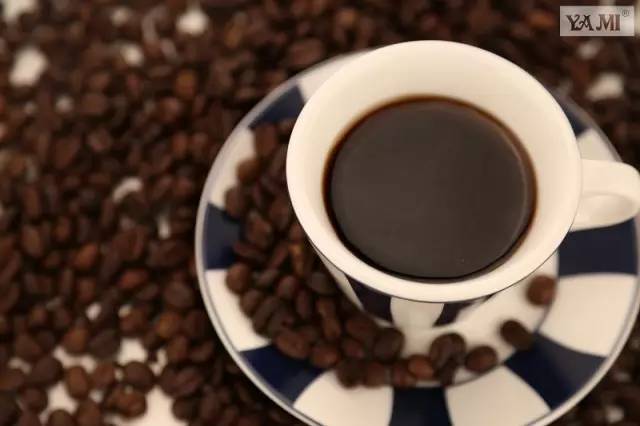Things you don't know about coffee!
The coffee was discovered by the shepherd
About the source of coffee, the most widely circulated is that an Ethiopian shepherd named Kaldi found his sheep very excited after eating a kind of red fruit. So I picked some to cook at home, and the aroma of the fruit filled the whole room! After that, coffee officially entered human life.
The name "Moka" comes from the Yemeni port of Muha.
Mocha is a port in southwestern Yemen and the first port in the world to export coffee beans to the world. It is said that Yemeni coffee beans have the taste of chocolate, so coffee containing chocolate is now called "mocha" (sound like "Mocha").

It takes a lot of water to grow coffee trees.
People always talk about how much water it takes to produce beef, but a pound of beef needs 1800 gallons of water (about 6814 liters), according to FoodBev.com. For every pound of coffee produced, coffee trees need to "drink" 2500 gallons of water (about 9464 liters).
Not only Kopi Luwak, but also shit-like coffee.
Asian raccoons are known to eat wild coffee fruits. The coffee fruit is fermented in their digestive tract and then excreted, giving the coffee an incredible flavor. However, due to the scarcity of production, the selling price of "Kopi Luwak" is very expensive. If you think this is not surprising, elephants are "producing" coffee in the same way in a wildlife reserve in Thailand: black ivory coffee (BlackIvoryCoffee).

Thousands of precious varieties are unique to Ethiopia.
There are thousands of different varieties of coffee in the forests of Ethiopia, none of which have been grown on a large scale. Only a few people are lucky enough to taste them.
A coffee tree can live for more than 200 years.
When the coffee tree first began to sprout, the top buds were very tender and lovely. No one would have thought that this seemingly "weak" plant would eventually stand on the ground for two centuries!

When the appraiser tastes the coffee, he takes a big gulp.
In most people's imagination, coffee appraisers should taste coffee with small sips and careful taste. But in fact, on the contrary, in order to have a comprehensive understanding of the flavor of coffee, appraisers will drink coffee. The aim is to make the coffee liquid fully flow through the whole mouth and reach the "sensitive areas" in the mouth that identify different flavors. (for example, the tongue corresponds to sweetness and the back of the throat corresponds to bitterness).
Coffee has more aromas than red wine.
There are about 1500 aroma characteristics of coffee, while only 200 are found in red wine.

The word Espresso does not mean "fast".
Most people think that Espresso means "fast" in Italian, but in fact, the word comes from Latin, which means "put." Squeeze it out. And don't pronounce it with an "X" unless you want to annoy the coffee maker.
Espresso contains less caffeine than freshly brewed coffee
Most people think that drinking Espresso with a strong taste will lead to more caffeine. But coffee makers have analyzed the data and found that the amount of caffeine in an 80-ounce (236.6 ml) cup of coffee is about 2.3 times that of a 1-ounce cup of Espresso. In terms of concentration, Espresso does have more caffeine. But less consumption caused people who drank Espresso to actually consume less caffeine.
Important Notice :
前街咖啡 FrontStreet Coffee has moved to new addredd:
FrontStreet Coffee Address: 315,Donghua East Road,GuangZhou
Tel:020 38364473
- Prev

Boutique Coffee learn the difference between American coffee and Italian coffee
The coffee we usually drink is made in different ways, which can be divided into American coffee and Italian coffee. American coffee is characterized by simple and quick; espresso is characterized by pure taste and rich flavor. to understand the difference between American coffee and Italian coffee, you must first understand the difference between American coffee and Italian coffee: American coffee, what most people can understand is American drip filter coffee, which is common in small household appliances.
- Next

Coffee control, look out! Don't drink coffee these days.
Coffee control, look out! Awakened by the aroma of coffee in the morning, a refreshing cup in the afternoon, and maybe a cup of digestion after dinner, coffee is becoming more and more popular. Coffee also has several legends. Drinking coffee can help you lose weight, help your eyesight, prevent stroke and fight cancer, but we would like to remind you that the mechanism of the effect of caffeine in coffee on the body is very complex.
Related
- Beginners will see the "Coffee pull flower" guide!
- What is the difference between ice blog purified milk and ordinary milk coffee?
- Why is the Philippines the largest producer of crops in Liberia?
- For coffee extraction, should the fine powder be retained?
- How does extracted espresso fill pressed powder? How much strength does it take to press the powder?
- How to make jasmine cold extract coffee? Is the jasmine + latte good?
- Will this little toy really make the coffee taste better? How does Lily Drip affect coffee extraction?
- Will the action of slapping the filter cup also affect coffee extraction?
- What's the difference between powder-to-water ratio and powder-to-liquid ratio?
- What is the Ethiopian local species? What does it have to do with Heirloom native species?

